Culture
In Full Colour: The 50 Best Children’s Book Illustrators
IntroWe bet storytime your child’s favourite time of day – and perhaps yours as well. But what would our most beloved children’s stories be without the imaginative illustrations that bring them to life? We’ve compiled a list to inspire illustration lovers of all ages, from contemporary classics to newer releases.
0/50
Culture
In Full Colour: The 50 Best Children’s Book Illustrators.
TennielJohn Tenniel – Alice’s Adventures in Wonderland (1865)
John Tenniel (1820-1914) was an English illustrator and political cartoonist who created the illustrations for Lewis Carroll’s (Charles Dodgson) Alice in Wonderland books. Tenniel received detailed instructions from the author, which he used to create imaginative pen and ink illustrations that would influence the work of many future artists. The drawings were transferred to wood block engravings, and then from these electrotype plates were made – a costly and time-consuming process, especially since Carroll apparently kept asking for changes.1/50
Culture
In Full Colour: The 50 Best Children’s Book Illustrators.
Peter RabbitBeatrix Potter – The Tale Of Peter Rabbit (1902)
That the tale of a mischievous bunny has proven to be timeless is demonstrated by the recently released 3D CGI-animated feature film Peter Rabbit. The character’s creator, Beatrix Potter (1863-1944), wasn’t just a writer, illustrator, natural scientist and conservationist, she was also a keen business woman. She self-published The Tale Of Peter Rabbit upon initial rejection, drawing the attention of publisher Frederick Warne & Co. Now, with 45 million copies sold, it is one of the bestselling books ever. Potter also licensed a stuffed toy in 1903, making Peter Rabbit one of the world’s oldest licensed characters.
2/50
Culture
In Full Colour: The 50 Best Children’s Book Illustrators.
Winnie The PoohE.H. Shepard – Winnie-The-Pooh (1926)
A.A. Milne was initially not so keen on using Ernest Howard Shepard (1879-1976) to illustrate his stories about his son, Christopher Robin, and his toys. However, he later realised that the drawings had become part of the book’s success. Way before Pooh Bear became Disneyfied, he was modelled by Shepard after Robin’s anthropomorphic toy bear, as well as on a stuffed bear owned by his own son. “That silly old bear,” as Shepard later called him, overshadowed his other work, such as Wind In The Willows, by Kenneth Grahame.3/50
Culture
In Full Colour: The 50 Best Children’s Book Illustrators.
BabarJean de Brunhoff – Histoire de Babar (1931)
Babar, the well-dressed elephant, was an immediate success upon his introduction by French artist Jean de Brunhoff (1899-1937). Author Maurice Sendak wrote of him: “Like an extravagant piece of poetry, the interplay between few words and many pictures, commonly called the picture book, is a difficult, exquisite, and most easily collapsible form that few have mastered….Jean de Brunhoff was a master of this form. Between 1931 and 1937 he completed a body of work that forever changed the face of the illustrated book.”4/50
Culture
In Full Colour: The 50 Best Children’s Book Illustrators.
Petit PrinceAntoine de Saint Exupéry – The Little Prince (1943)
Although Antoine de Saint-Exupéry (1900–1944) only wrote one children’s book during his life, the poetic story of a little prince visiting Earth from a tiny asteroid is one of the most beloved of all time. Little could he have known that his delicate watercolours would end up on every imaginable product, from teacups to enamel eggs. There’s also a Petit Prince shop in Paris, a theme park in Eastern France and another in South Korea.
5/50
Culture
In Full Colour: The 50 Best Children’s Book Illustrators.
HaroldCrockett Johnson – Harold and the Purple Crayon (1955)
Crockett Johnson was the pen name of American cartoonist and children’s book illustrator David Johnson Leisk (1906-1975). Harold and the Purple Crayon is the first of the popular Harold series, a book about a curious boy creating his own world with a purple crayon, and demonstrating how far the imagination can take you. Johnson’s editor didn’t immediately take to the book, but reconsidered, and it has never been out of print since it first came out in 1955.
6/50
Culture
In Full Colour: The 50 Best Children’s Book Illustrators.
MiffyDick Bruna – Nijntje (Miffy) (1955)
For thousands of children all over the world, it was love at first sight with Miffy. The little white rabbit, “Nijntje” in Dutch, first took shape after Dick Bruna (1927-2017) told his one-year-old son stories about a rabbit they had spotted in the dunes. Bruna’s work, characterised by heavy black lines, simple shapes and colours (primary colours plus green and orange), is instantly recognisable in all of the 200 books he created and illustrated, as well as lining the walls of art museums.7/50
Culture
In Full Colour: The 50 Best Children’s Book Illustrators.
Cat In The HatDr. Seuss – The Cat In The Hat (1957)
The Cat in the Hat was Dr. Seuss’s second book for children, with which Theodor Seuss Geisel ( (1904- 1991) moved from being an advertising executive and political cartoonist to a world-famous illustrator and author. Seuss wanted to create a book that children couldn’t put down, using a mere 220 words. The ample illustrations are simple with striking blues and reds, and they give a whole lot of depth to the story about an anthropomorphic cat in a stripy hat and red bow tie.8/50
Culture
In Full Colour: The 50 Best Children’s Book Illustrators.
PaddingtonPeggy Fortnum – A Bear Called Paddington (1958)
Although other artists have worked on Michael Bond’s famous bear, Paddington first took shape thanks to Peggy Fortnum (1919-2016). After visits to the London Zoo, she made lots of pen sketches until she was happy with the result. Even though the bear from darkest Peru had a hat, a coat and a suitcase, “he had to look real,” she wrote in unpublished memoirs.9/50
Culture
In Full Colour: The 50 Best Children’s Book Illustrators.
LeonniLeo Lionni – Little Blue and Little Yellow (1959)
The first to use collage for children’s books, Leo Lionni (1910-1999) became famous for his boldly coloured books for very young children. He created his first children’s book, Little Blue And Little Yellow, when he was on a long train ride without any drawing materials. He also uses animals often, such as the mouse in Frederick and the chameleon in A Color Of His Own. The question he was asked most during his life was, “How do you get your ideas?” – to which he said: “I am tempted to answer, unromantic though it may sound, ‘Hard work.’”10/50
Culture
In Full Colour: The 50 Best Children’s Book Illustrators.
Snowy DayEzra Jack Keats – The Snowy Day (1962)
Keats (1916-1983) drew inspiration from the winter days of his Brooklyn childhood for The Snowy Day. “I wanted to convey the joy of being a little boy alive on a certain kind of day – of being for that moment,” he said. “The air is cold, you touch the snow, aware of the things to which all children are so open.” This feeling of wonder was universal to all children, regardless of race, Keats believed, and he was the first to break the colour barrier in children’s literature. The foundation in his name aims to bring the multicultural, creative spirit of Keats into children’s lives and literature.11/50
Culture
In Full Colour: The 50 Best Children’s Book Illustrators.
Word BookRichard Scarry – Best Word Book Ever (1963)
“Children like funny situations, detail and lots of action,” Richard Scarry (1919-1994) once said in an interview. His detail-rich books (such as the 1,400 objects in Best Word Book Ever) have fascinated inquisitive children for decades. Since it first came out in 1963, the book has been subtly updated to change outdated stereotypes.12/50
Culture
In Full Colour: The 50 Best Children’s Book Illustrators.
Wild ThingsMaurice Sendak – Where The Wild Things Are (1963)
The ‘Wild Things’ in this wildly popular picture book had almost looked quite different, but since Maurice Sendak (1928-2012) was unable to draw wild horses, he changed them to the monsters kids still love today. Sendak based them on the caricatures of his relatives that he used to draw as a child. He wrote and illustrated other children’s books, and his illustrations have enhanced other texts as well, such as the Little Bear books by Else Holmelund Minarik.13/50
Culture
In Full Colour: The 50 Best Children’s Book Illustrators.
CaterpillarEric Carle – The Very Hungry Caterpillar (1969)
The famous story featuring a caterpillar who eats its way through different foods to become a beautiful butterfly was inspired by a hole puncher. Eric Carle (1929) was thinking of using a bookworm, and created the story A Week with Willi the Worm, but his editor suggested a caterpillar would be more likeable, upon which Carle said: “Butterfly!” The collage-illustrated book is almost 50 years old and has sold over 30 million copies. Not only did Carle create many beloved books, he also opened the Eric Carle Museum of Picture Book Art in Amherst, Massachusetts.14/50
Culture
In Full Colour: The 50 Best Children’s Book Illustrators.
LobelArnold Lobel – Frog And Toad Are Friends (1970)
Arnold Lobel (1933-1987) produced many children’s books during his short lifetime, including Mouse Soup and the Frog and Toad series, still popular with young readers today. The amphibious friends have wildly different characters, but they stick together through thick and thin, and their warm, funny tales wouldn’t have been the same without the detailed illustrations.15/50
Culture
In Full Colour: The 50 Best Children’s Book Illustrators.
MogJudith Kerr – Mog the Forgetful Cat (1970)
Judith Kerr (1923) first created Mog in 1970, and went on to write and illustrate 15 more books based on the eccentric egg-loving cat. Kerr had always longed for a cat, but as a refugee from Nazi Germany, she was not allowed a pet. When she had children of her own, she had a cat named Mog, who almost never meowed, but made wonderfully expressive faces. Kerr hasn’t just created picture books during her long career, she’s also written novels for older children.16/50
Culture
In Full Colour: The 50 Best Children’s Book Illustrators.
JanoschJanosch – Oh, Wie Schön Ist Panama (The Trip To Panama) (1978)
German illustrator Janosch (1931) rose to world fame with The Trip To Panama, telling the tale of Little Tiger, Little Bear and Tiger Duck who leave their house to go look for the land of their dreams – and eventually making them aware of how comfortable their home is. The books about friendship have been made into several films, while Tiger Duck, a toy duck on wheels that never speaks, has reached cult status.17/50
Culture
In Full Colour: The 50 Best Children’s Book Illustrators.
BriggsRaymond Briggs – The Snowman (1976)
Raymond Briggs (1934), who produced many children’s picture books, is most famous for The Snowman, an entirely wordless story about a snowman who comes to life at midnight. The book, done in pencil crayon, was later adapted into an Oscar-nominated animated short film, which is often televised at Christmastime. However, in the book there are zero references to Christmas. “I don’t like the Christmas thing at all,” Briggs has said.18/50
Culture
In Full Colour: The 50 Best Children’s Book Illustrators.
Taro GomiTarō Gomi – Everyone Poops (1977)
Tarō Gomi (1945) is one of Japan’s most prolific children’s book illustrators and writers, with over 400 books published in Japan, a number of which have been translated into different languages. In English, Everyone Poops is his most famous – a simple, plotless celebration of the most natural of processes.19/50
Culture
In Full Colour: The 50 Best Children’s Book Illustrators.
Eric HillEric Hill – Where’s Spot (1980)
When Eric Hill (1927-2014) was working in creative marketing, his three-year-old son became so captivated by lifting up a paper of a design he was working on, that the artist created a story about a curious puppy that involved lifting paper flaps. This was an innovation in the 1970s, and it took a while for a publisher to pick up the book. Once they did, it became an instant success, and Spot books continue to sell millions of copies worldwide.20/50
Culture
In Full Colour: The 50 Best Children’s Book Illustrators.
BFGSir Quentin Blake – The BFG (1982)
Sir Quentin Blake (1932) had illustrated two of Roald Dahl’s books before, but The BFG marked the start of a friendship and a closer collaboration between the two. The Big Friendly Giant took a different shape than his initial drawings, and even wore the sandals that Dahl sent the illustrator by mail. Blake illustrated many of Dahl’s books, even after the author had passed away; he also illustrated classic books and created popular characters of his own, such as Mister Magnolia and Mrs Armitage.21/50
Culture
In Full Colour: The 50 Best Children’s Book Illustrators.
De SotoWilliam Steig – Doctor De Soto (1982)
William Steig (1907-2003) worked as a cartoonist and illustrator for The New Yorker and didn’t start publishing picture books until he was in his 60s. However, many of them are still devoured by kids today, such as Doctor De Soto, a mouse-dentist who risks his life helping a fox with a toothache. Steig also wrote Sylvester And The Magic Pebble and Abel’s Island, and was the original creator of the green ogre Shrek.22/50
Culture
In Full Colour: The 50 Best Children’s Book Illustrators.
FriendsHelme Heine – Friends (1982)
The story of three inseparable pals who do everything together, Friends is the most famous of Helme Heine’s (1941) works. The German author created multiple adventures featuring Charlie Rooster, Johnny Mouse and Percy the Pig. The little green dragon Tabaluga is also Heine’s creation. With his ‘Friends’ foundation, Heine supports teaching life skills to young children, preventing violence and addiction.23/50
Culture
In Full Colour: The 50 Best Children’s Book Illustrators.
BoyntonSandra Boynton – The Going to Bed Book (1982)
Described as “serious silliness for all ages,” Sandra Boynton’s (1953) funny hippos, rhinos, cows, chickens, dogs and mice are instantly recognisable. She first created them for a line of greeting cards, and then began making books – mostly board books for young children. Favourites include Moo, Baa, La La La!, Hippos Go Berserk! and Barnyard Dance. The Going to Bed Book is the perfect story for winding down at night.24/50
Culture
In Full Colour: The 50 Best Children’s Book Illustrators.
ChiguiroIvar Da Coll – Chigüiro y el lápiz (1985)
Autodidact Ivar da Coll (1962) is one of Colombia’s most famous illustrators and writers. His best-known series is that of the character Chigüiro, a giant rodent that inhabits several of the countries of Latin America. Da Coll was a pioneer in creating picture books with very little text: “I have dedicated myself to making strong images that have a very clear narrative sense.” He also likes to introduce elements of Colombian culture and landscapes into his work.25/50
Culture
In Full Colour: The 50 Best Children’s Book Illustrators.
FrogMax Velthuijs – Frog In Love (1989)
Max Velthuijs (1923-2005) was a Dutch illustrator who also became an author, best known for his Frog (“Kikker”) books about the adventures of a lovable frog and his friends Pig, Duck, Hare and Rat. The stories – with deceptively simple drawings in pen and ink, filled in with bold colours – don’t shy away from tackling big existential themes, but always in a loving, playful way.26/50
Culture
In Full Colour: The 50 Best Children’s Book Illustrators.
OxenburyHelen Oxenbury – We’re Going On A Bear Hunt (1989)
“When I started illustrating, people really thought babies were just vegetables until they were at least one,” Oxenbury (1938) said in an interview. As a parent, the illustrator noticed her baby needed more stimulation, and that’s why she began creating board books for the littlest ones. Oxenbury, who was awarded the 2018 BookTrust Lifetime Achievement Award, is also known for illustrating We’re Going On A Bear Hunt (Michael Rosen) and There’s Going To Be A Baby (2010) with her husband, John Burningham.27/50
Culture
In Full Colour: The 50 Best Children’s Book Illustrators.
KipperMick Inkpen – Kipper (1991)
Mick Inkpen (1952) said about Kipper, his character that’s extremely popular with preschool children: “Kids can live vicariously through Kipper; he is an honorary toddler who has remained the same and not grown up over the years. Yet he doesn’t have any parents, so he can do things that they are not yet able or allowed to do – they can experiment safely through him.” The dog first appeared in The Blue Balloon, but since he began walking on two legs, he has become the star of the show, appearing in a range of books.28/50
Culture
In Full Colour: The 50 Best Children’s Book Illustrators.
Rainbow FishMarcus Pfister – The Rainbow Fish (1992)
For children to really grasp the joy of sharing, Swiss designer and author Marcus Pfister (1960) decided to use holographic foil for the Rainbow Fish’s shimmering scales. The story about this lonely fish giving his scales away to other fish is now a modern classic, with more than 30 million copies sold.29/50
Culture
In Full Colour: The 50 Best Children’s Book Illustrators.
ErlbruchWolf Erlbruch – The Story of the Little Mole Who Knew It Was None of His Business (1994)
According to German illustrator Wolf Erlbruch (1948), he became a children’s illustrator after the birth of his son Leonard, as he wanted him to be able to say, “Look, my dad made a children’s book.” Erlbruch became best known for illustrating The Story of the Little Mole Who Knew It Was None of His Business with Werner Holzwarth, which was a massive success the world over, but he also created stories of his own such as The Miracle of the Birds and Duck, Death and the Tulip. “Most important in drawing or writing for children is to be honest about your own feelings and tell about yourself also,” said Erlbruch, who won the Astrid Lindgren Memorial Award in 2017.30/50
Culture
In Full Colour: The 50 Best Children’s Book Illustrators.
JeramAnita Jeram – Guess How Much I Love You (1994)
“I love you right up to the moon and back.” What parent doesn’t love this story about Big and Little Nutbrown Hare, written by Sam McBratney? Anita Jeram’s (1965) soft watercolours perfectly capture the love between the two hares. “Pictures, like children, can have unexpected and unimagined lives of their own, as they find their way in the wide, wide world,” Jeram said about the book’s immediate success. She later illustrated many other storybooks and greeting cards, and made original artwork.31/50
Culture
In Full Colour: The 50 Best Children’s Book Illustrators.
ANNOMitsumasa Anno – Anno’s Journey (1997)
Japanese illustrator Mitsumasa Anno (1926) was fascinated by Europe since his childhood, with its landscapes, history, art, architecture and folklore. He travelled to the continent multiple times, drawing inspiration for his wordless picture books that featured a tiny character travelling through a detail-rich landscape full of cultural references, humour and visual tricks. Anno also created books on science and mathematics.
32/50
Culture
In Full Colour: The 50 Best Children’s Book Illustrators.
IsolIsol – A Dog’s Life (1997)
Argentine artist and pop singer Isol, or Marisol Misenta (1972), rose to fame in 1997 with her first book Vida de Perros (“Life of Dogs”), a story about a boy who wants his life to resemble his dog’s. Years ago, the jury of the prestigious Astrid Lindgren Memorial Award deemed her work “psychotic,” but she did take the award home in 2013. In her acceptance speech she said: “What reader could be more demanding than a child? Children have a lot of things to discover, and I’d better be on their high level in order to satisfy their huge capacity for curiosity.”33/50
Culture
In Full Colour: The 50 Best Children’s Book Illustrators.
GiraffesGuy Parker-Rees – Giraffes Can’t Dance (1999)
Gerald is a giraffe who feels too awkward to dance, until a cricket teaches him that he needs to dance to his own tune. The touching tale was illustrated by Guy Parker-Rees in a vibrant style with strong colours and bouncing lines, and it quickly became an international bestseller. Parker-Rees has also collaborated with other authors, such as Tony Mitton, on several successful picture book series.34/50
Culture
In Full Colour: The 50 Best Children’s Book Illustrators.
GruffaloAxel Scheffler – The Gruffalo (1999)
Axel Scheffler (1957) may have faxed an illustrator friend a daily drawing of his struggles to get Julia Donaldson’s Gruffalo just right, but it’s safe to say he succeeded in the end: the award-winning book has sold over 13 million copies and been translated into 43 different languages. The German-born illustrator has illustrated dozens of books by Donaldson and other authors.35/50
Culture
In Full Colour: The 50 Best Children’s Book Illustrators.
CousinsLucy Cousins – Maisy’s Bedtime (1999)
Lucy Cousins (1964) created a board book featuring a little girl who was about to go for a swim, but at the suggestion of her editor, changed her into a mouse: Maisy. Cousins said in an interview: “It’s not that I have a particular fondness for mice. She simply presented herself to me, her personality from the drawing.” The mouse that created itself is now a global phenomenon, with 21 million copies sold, available in 29 languages.36/50
Culture
In Full Colour: The 50 Best Children’s Book Illustrators.
OliviaIan Falconer – Olivia (2000)
The story of precocious little pig Olivia was meant as a present for Falconer’s niece of the same name, but she became the protagonist of a wildly popular book series and TV show. Done in minimalist black and white, with a splash of red and only one other colour per book, Ian Falconer (1959) included real artwork by famous artists. “I never underestimate children: they’re built to sort things out, figure things out, make sense of things,” he said in an interview.37/50
Culture
In Full Colour: The 50 Best Children’s Book Illustrators.
Name JarYangsook Choi – The Name Jar (2001)
Yangsook Choi grew up in Korea, and moved to New York City to pursue her art. The Name Jar is the story of Unhei, a girl who just arrived from Korea and is anxious about making new friends. When asked about writing for children, Choi said: “I would say that you could be a very crafty writer and have great technique, but the first thing that you must make sure of is that you have the right relationship, the right kind of communication with kids.”38/50
Culture
In Full Colour: The 50 Best Children’s Book Illustrators.
KalmanMaira Kalman – What Pete Ate (2001)
Unruly dog Pete devours everything he finds, from an accordion to Zug Zug dog grub; Maira Kalman’s (1949) take on an alphabet book is just pure fun. The Israeli-born American illustrator, writer, artist and designer creates books for both adults and children, but the lines tend to blur between the two. She also wrote Fireboat: the story of NYC’s iconic fireboat John J. Harvey which sprang into action during 9/11.39/50
Culture
In Full Colour: The 50 Best Children’s Book Illustrators.
WillemsMo Willems – Don’t Let the Pigeon Drive the Bus! (2003)
A bus driver asks the reader to look after the bus for a while, and not allow the pigeon to drive the bus, much to the chagrin of the pigeon. The first children’s book by Mo Willems (1968) became a contemporary classic, but he has written many more titles, including Pigeon sequels, as well as the popular Knuffle Bunny and Elephant & Piggie series (for early readers)40/50
Culture
In Full Colour: The 50 Best Children’s Book Illustrators.
De MonfreidDorothée de Monfreid – I’d Really Like To Eat A Child (2007)
Children will probably want to read I’d Really Like To Eat A Child over and over again, as the story about this small crocodile never gets old. It’s addictively good, not in the least because of the humorous illustrations by French illustrator Dorothée de Monfreid (1973). De Monfreid writes children’s books, too, and created the children’s musical show Super Sauvage. She is also an accomplished ukulele player.41/50
Culture
In Full Colour: The 50 Best Children’s Book Illustrators.
A Bit LostChris Haughton – A Bit Lost (2010)
When illustrator Chris Haughton (1978) began creating children’s books, it started raining awards from all over the world. In his bold style that’s instantly recognisable, he first wrote A Bit Lost, a heartwarming story about a little owl who falls out of his nest and can’t seem to find his way back to his mum. He also created Oh No George! and Shhh! We Have A Plan, in addition to the app Hat Monkey.42/50
Culture
In Full Colour: The 50 Best Children’s Book Illustrators.
AmosErin Stead – A Sick Day for Amos McGee (2010)
The delicate illustrations of American artist Erin Stead (1982) turn the words of Philip Stead, her husband, into a memorable tale. Amos McGee misses a day of work at the zoo because he is ill, so the animals visit him and keep him company. Erin, who won a Caldecott Medal for this book, has illustrated more of her husband’s work, such as The Purloining of Prince Oleomargarine (an unfinished Mark Twain story), as well as books by others, such as Julia Fogliano and Michelle Cuevas.43/50
Culture
In Full Colour: The 50 Best Children’s Book Illustrators.
KlassenJon Klassen – This Is Not My Hat (2012)
Canadian-born Klassen’s style is a bit dark and edgy – and children love it. This Is Not My Hat is part of the Hat Trilogy (others include I Want My Hat Back and We Found A Hat), and has been described by Kirkus Reviews as a “darkly comic haberdashery whodunit.” On pictures, Klassen (1981) said in an interview: “Kids learn to read more critically; they realise these pictures have a reason. They are not just there to entertain us while all the important text is happening.”44/50
Culture
In Full Colour: The 50 Best Children’s Book Illustrators.
JeffersOliver Jeffers – The Day The Crayons Quit (2013)
Original and funny, The Day The Crayons Quit became an instant success. The story of Duncan’s revolting crayons, a collaboration between author Drew Daywalt and Oliver Jeffers (1977), inspired three more titles. Jeffers also created prize-winning titles like How To Catch A Star, Stuck and Lost and Found.45/50
Culture
In Full Colour: The 50 Best Children’s Book Illustrators.
TanShaun Tan – Rules Of Summer (2014)
In his distinct surreal style, Shaun Tan (1974) created a story about two young boys whose friendship is tested by many challenging situations. The Australian writer, illustrator and animator said about the book: ”While at first this might seem a book for children, I’m really interested in the universal themes governing any intimate relationship regardless of age, gender or background, from siblings to best friends, coworkers and partners. The private universe of imagination and conflict that can exist here so often defies explanation and is, I think, best represented as a kind of shared dream.”46/50
Culture
In Full Colour: The 50 Best Children’s Book Illustrators.
RobinsonChristian Robinson – Last Stop On Market Street (2015)
Last Stop On Market Street, written by Matt de la Pena, follows a young boy who learns to appreciate everyday beauty during a bus ride. Christian Robinson’s (1986) mix of paint and collage for the illustrations earned him a number of awards. Robinson, based in San Francisco, called his website “The art of fun,” because “the mastery of having fun, that is something I aspire to do in my work. (…) Hopefully that experience of joy is contagious and can make others feel good as well.”47/50
Culture
In Full Colour: The 50 Best Children’s Book Illustrators.
RuedaClaudia Rueda – Here Comes Teacher Cat (2017)
Lawyer Claudia Rueda found a course on children’s book illustration at the University Of Berkeley by pure serendipity, and the Colombian creative now is the author and illustrator of over 30 books published in Mexico, Colombia, Spain and the United States, many of which have been translated into different languages around Asia and Europe. Here Comes Teacher Cat, about substitute teacher Cat, is her latest collaboration with writer Deborah Underwood.48/50
Culture
In Full Colour: The 50 Best Children’s Book Illustrators.
FeatherRoger Mello – Feather (2017)
“I believe a good picture book comes close to philosophy,” famous Chinese children’s author Cao Wenxuan writes in the introduction to the lovely Feather, a tale about a feather that goes on a journey of discovery and belonging. It is illustrated by acclaimed Brazilian artist Roger Mello (1965), with gorgeously blazing colours and intricate detail, like the plumage of the birds. Mello has done the artwork for over 100 titles, of which he wrote 22 himself; he often includes social criticism in his work.49/50
Culture
In Full Colour: The 50 Best Children’s Book Illustrators.
CrowtherKitty Crowther – Small Stories Of The Night (2018)
The jury of the Astrid Lindgren Memorial Award called 2010 recipient Kitty Crowther (1970) “the master of line and atmosphere.” The half-Swedish, half-English illustrator lives and works in Belgium, where she has written and illustrated around 40 books, including Jack & Jim and Scritch Scratch Scraww Plop!. Small Stories Of The Night is her forthcoming book, which we eagerly await. #staysafe #stayathome #selfisolation50/50


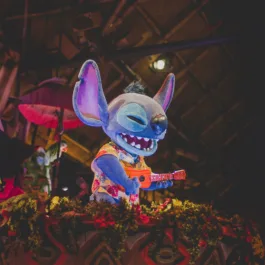
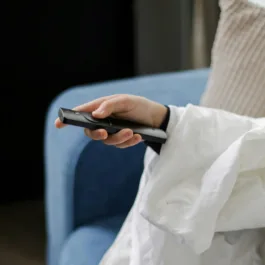
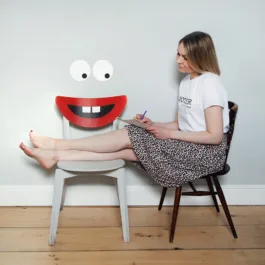
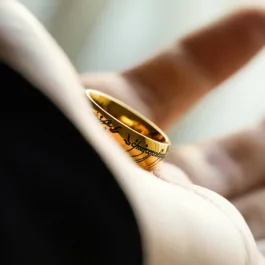
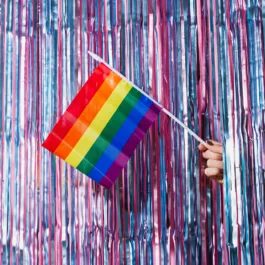
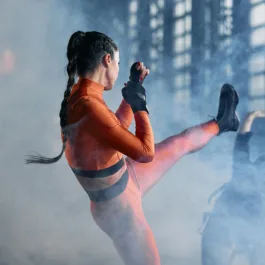
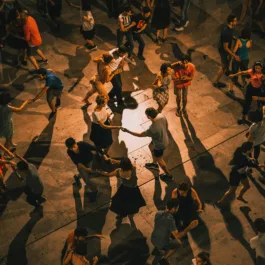
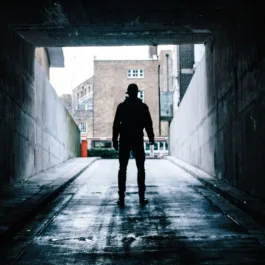

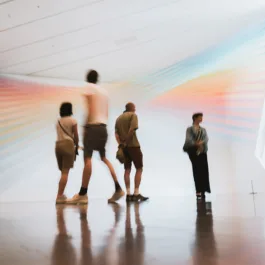
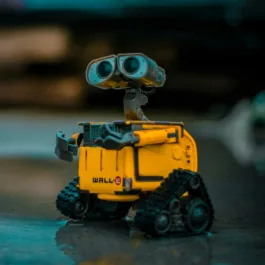
Sorry, the comment form is closed at this time.